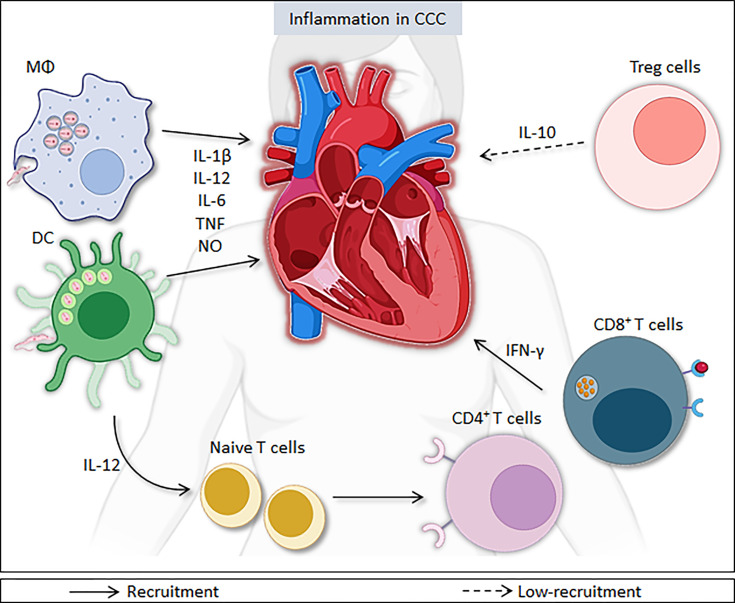Figure 1.
Immune responses during Trypanosoma cruzi infection. After activation via Toll-like receptors, innate immune cells, such dendritic cells and macrophages, produce pro-inflammatory molecules, such as IL-1β, IL-6, IL-8, IL-12, TNF, and nitric oxide, which help in combating the parasite. However, these molecules contribute to inflammation in the heart in both phases of disease. IL-12 production promotes a shift towards Th1 lymphocyte profile. CD4+ and CD8+ T cells, mainly through the production of IFN-γ, contribute to the activation of other immune cells and increase the production of pro-inflammatory molecules, such as IL-12, TNF, and nitric oxide, cooperating for the control of infection. The persistence of high levels of pro-inflammatory cytokines, such as IFN-γ and TNF, and the increase in IFN-γ-producing CD4+ and CD8+ T lymphocytes contribute to the persistence of inflammation in heart. Moreover, the low-recruitment of T-regulatory cells (Treg) and reduced IL-10 production also favor the persistence of heart inflammation in CCC.

